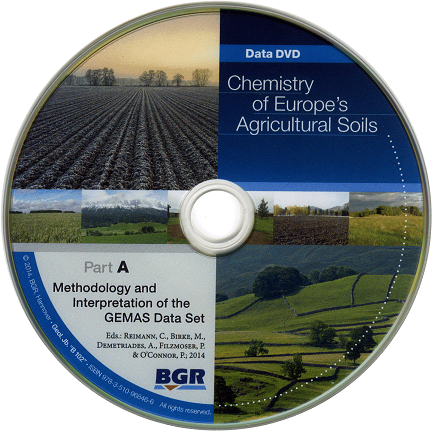Keyword
agriculture
140 record(s)
Provided by
Type of resources
Available actions
Topics
Keywords
Update frequencies
Service types
-
-
-
-

-
Der Datensatz „INSPIRE BW Bodennutzung Flächeninformation und Online-Antrag FIONA“ stellt die Bodennutzung von landwirtschaftlich genutzten Flächen dar. Die Polygone zeigen die Grenzen einer, im Rahmen des Gemeinsamen Antrages 2022, gemeldeten Nutzung. Die Daten werden im Rahmen der Gemeinsamen Agrarpolitik der EU erhoben und sind Bestandteil des Verwaltungssystems von Baden-Württemberg. Ein Polygon liegt nur dann vor, wenn die landwirtschaftliche Fläche im Gemeinsamen Antrag beantragt worden ist. Die Polygone wurden anonymisiert.
-
Der Datensatz „INSPIRE BW Bodennutzung Flächeninformation und Online-Antrag FIONA ab 2023“ stellt die Bodennutzung von landwirtschaftlich genutzten Flächen dar. Die Polygone zeigen die Grenzen einer, im Rahmen des Gemeinsamen Antrages, gemeldeten Nutzung. Die Daten werden im Rahmen der Gemeinsamen Agrarpolitik der EU erhoben und sind Bestandteil des Verwaltungssystems von Baden-Württemberg. Ein Polygon liegt nur dann vor, wenn die landwirtschaftliche Fläche im Gemeinsamen Antrag beantragt worden ist. Die Polygone wurden anonymisiert.
-

GEMAS (Geochemical Mapping of Agricultural and Grazing Land Soil in Europe) is a cooperative project between the Geochemistry Expert Group of EuroGeoSurveys and Eurometeaux. In total, more than 60 international organisations and institutions worldwide were involved in the implementation of the project. During 2008 and 2009, a total of 2219 samples of agricultural (arable land soils, 0 – 20 cm, Ap samples) and 2127 samples of grazing land (pasture land soils, 0 – 10 cm, Gr samples) soil were collected at a density of 1 site/2 500 km2 each from 33 European countries, covering an area of 5,600,000 km2. All samples were analysed for 52 chemical elements after an aqua regia extraction, 41 by XRF (total), TC and TOC. In addition, the agricultural soil samples were analysed for 57 elements in a mobile metal ion (MMI®) extraction and Pb isotopes. All analytical results were subject to tight external quality control procedures. The GEMAS project thus provides for the first time fully harmonised data for element concentrations and bioavailability of the elements at the continental (European) scale. The original data stored on the DVD attached to the Geol. Jb. B 102 (*.xls & *.pdf; approx.. 14 MB) as well as the complete content of the DVD (dataset, maps & graphics, statistical tables, ...) in two formats (ISO image and complete content as ZIP file, each approx. 2 GB) are available for download.
-
Der Datensatz enthält nichtlandwirtschaftliche Flächen in Niedersachsen, Bremen and Hamburg, die in das INSPIRE-Datenmodell "Land Parcel Identification System" transformiert wurden. Es handelt sich hierbei um Flächen, die von den Mitgliedstaaten als förderfähig im Rahmen von Titel III, Kapitel 4 der Verordnung (EU) 2021/2115 angesehen werden. Die Daten werden dreimal pro Jahr aktualisiert.
-
Für die Verwendung im Antragsverfahren des Integrierten Verwaltungs- und Kontrollsystems (InVeKoS) werden digitale Datenebenen benötigt, die mit der erforderlichen Genauigkeit die aktuelle Situation der landwirtschaftlichen Nutzung darstellen. Das System zur Identifizierung landwirtschaftlicher Parzellen (LPIS) nach Artikel 68 der Verordnung (EU) 2021/2116 ist ein Bestandteil des Integrierten Verwaltungs- und Kontrollsystems (InVeKoS), wie in Artikel 66 der genannten Verordnung definiert. Es wird auf Ebene der Referenzparzellen angewandt. (VO 2022/1172 Art. 2 Abs. 1). Das Thüringer Flächenreferenzsystem (digitale Grundkarte Landwirtschaft, kurz DGK-Lw) basiert in Thüringen auf der Referenzparzelle Feldblock (FB) gemäß § 5 Nr. 1 GAPInVeKoS-Verordnung. Der Feldblock ist danach eine von dauerhaften Grenzen umgebene zusammenhängende landwirtschaftliche Fläche eines oder mehrerer Betriebsinhaber. Der Feldblock beinhaltet somit die Informationen über die geographische Lage der Außengrenzen der landwirtschaftlichen Nutzfläche. Referenzparzellen sind deutschlandweit eindeutig durchnummeriert (Feldblockident - FBI). Sie besitzen weiterhin eine Feldblockgröße (maximal förderfähige Fläche) und eine Bodennutzungskategorie. Folgende Feldblocktypen gibt es: - Landwirtschaftliche Nutzfläche (LF) - Landschaftselemente (LE) - Sondernutzungsflächen (SF) - Forstflächen (FF) Die Einteilung der Feldblöcke erfolgt getrennt nach den Hauptbodennutzungen Ackerland (AL), Grünland (GL), Dauerkulturen (DK), einschließlich darauf befindlicher Agroforstsysteme sowie nach den BNK für keine „landwirtschaftliche Fläche“ entsprechend § 11 Abs. 1 Nr. 3 Buchst. a, b, c und d GAPDZV (NW, EF und PK) und Sonstige. Landschaftselemente (LE) werden entsprechend der Verordnung (EU) 2022/1172 Art. 2 Abs. 7 unter definierten Bedingungen als Teil der förderfähigen landwirtschaftlichen Fläche betrachtet. In Thüringen werden diese dauerhaften Konditionalitäts-LE als separater Feldblock (FB) ausgewiesen und sind somit Teil des Thüringer Flächenreferenzsystems (Feldblockreferenz). Sie müssen einen eindeutigen Bezug zu einem LF-FB (Landwirtschaftliche Nutzfläche) besitzen, d.h. sie liegen innerhalb eine Acker-, Dauergrünland- oder Dauerkulturfläche oder grenzen in Randlage direkt an diese. Für die Herstellung der DGK-Lw werden (amtliche) Orthofotos der Thüringer Kataster- und Vermessungsverwaltung (TLBG) sowie Orthofotos aus Eigenbefliegungen des TLLLR interpretiert. Die Herkunft dieser Bilddaten beträgt jährlich jeweils 50 % der Landesfläche, so dass in jedem Jahr für die gesamte Thüringer Landesfläche aktuelle Bilddaten vorliegen.
-

GEMAS (Geochemical Mapping of Agricultural and Grazing Land Soil in Europe) is a cooperative project between the Geochemistry Expert Group of EuroGeoSurveys and Eurometeaux. In total, more than 60 international organisations and institutions worldwide were involved in the implementation of the project. During 2008 and 2009, a total of 2219 samples of agricultural (arable land soils, 0 – 20 cm, Ap samples) and 2127 samples of grazing land (pasture land soils, 0 – 10 cm, Gr samples) soil were collected at a density of 1 site/2 500 km² each from 33 European countries, covering an area of 5,600,000 km². All samples were analysed for 52 chemical elements after an aqua regia extraction, 41 by XRF (total), TC and TOC. In addition, the agricultural soil samples were analysed for 57 elements in a mobile metal ion (MMI®) extraction and Pb isotopes. All analytical results were subject to tight external quality control procedures. The GEMAS project thus provides for the first time fully harmonised data for element concentrations and bioavailability of the elements at the continental (European) scale. Compared to the original dataset, the download files contain a dataset (*.xlsx , *.csv) that has been extended to include data from eastern Ukraine and in the element spectrum. In addition, a dataset description (structure and features) is provided.
 www.geodatenkatalog.de (S1L)
www.geodatenkatalog.de (S1L)